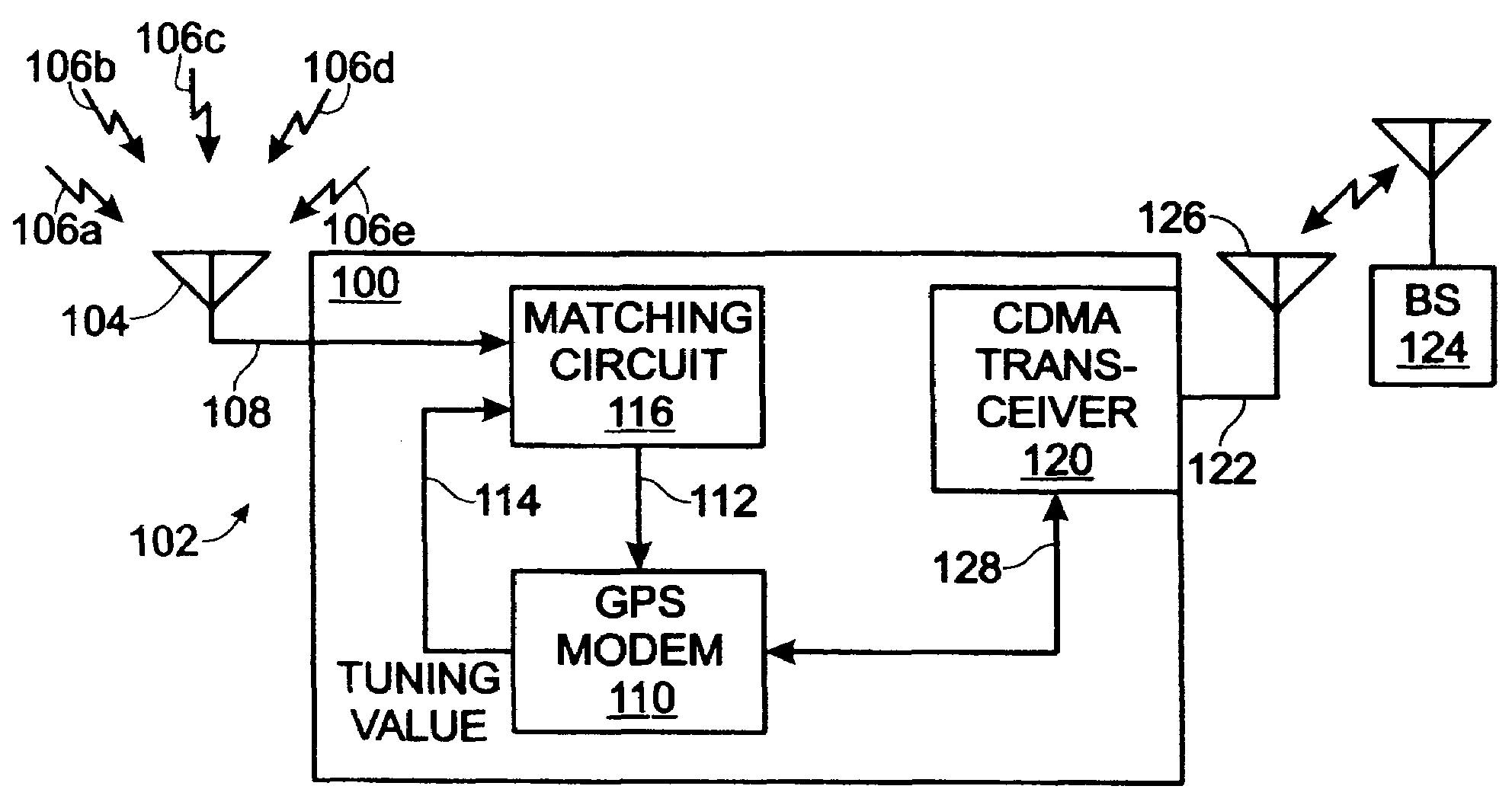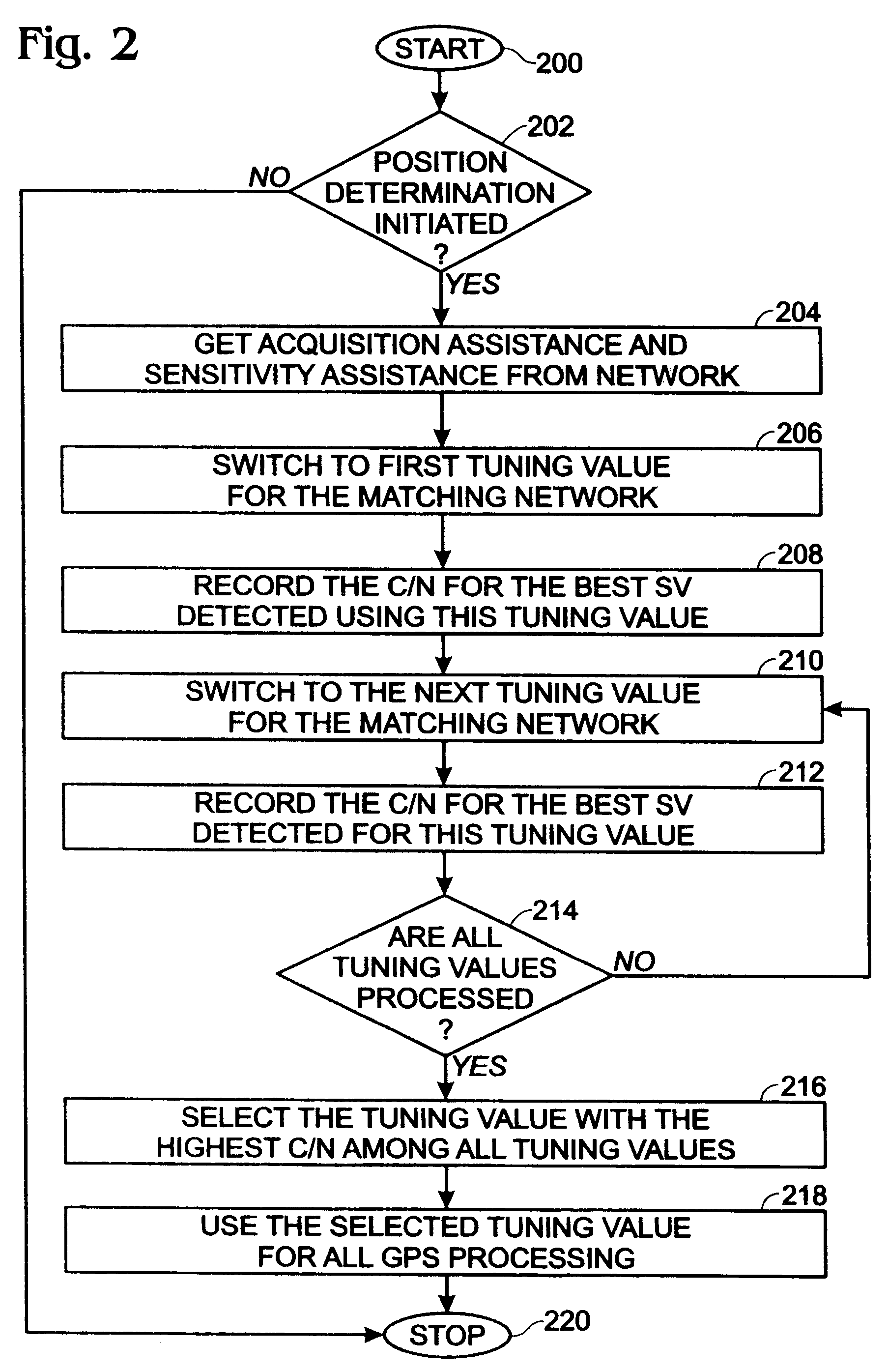Method for tuning a GPS antenna matching network
a technology of global positioning system and antenna matching, applied in the field of wireless communication, can solve problems such as significant degradation of antenna efficiency, and achieve the effect of reducing antenna efficiency and reducing antenna efficiency
- Summary
- Abstract
- Description
- Claims
- Application Information
AI Technical Summary
Benefits of technology
Problems solved by technology
Method used
Image
Examples
Embodiment Construction
[0018]FIG. 1 is a schematic block diagram of an exemplary system for tuning a Global Positioning System (GPS) antenna matching circuit portable wireless communications device 100 according to one embodiment of the invention. The system 102 comprises an antenna 104 for receiving Satellite Vehicle (SV) signals radiated through an air or space medium, represented by reference designators 106a through 106e. The number of visible SVs (SVs whose signals can be received) is dependent upon geographic features near the wireless device 100, device altitude, and weather conditions. Generally however, an absolute minimum of three SVs are required to determine a stationary position. Four SVs are minimally required to determine the position of a moving device 100. Often, a wireless device 100 is able to receive signals from eight SVs simultaneously in an outdoor environment. The antenna 104 has an interface 108 (i.e., a hardwire such as a coaxial line connector) for supplying conducted SV signals...
PUM
 Login to View More
Login to View More Abstract
Description
Claims
Application Information
 Login to View More
Login to View More - R&D
- Intellectual Property
- Life Sciences
- Materials
- Tech Scout
- Unparalleled Data Quality
- Higher Quality Content
- 60% Fewer Hallucinations
Browse by: Latest US Patents, China's latest patents, Technical Efficacy Thesaurus, Application Domain, Technology Topic, Popular Technical Reports.
© 2025 PatSnap. All rights reserved.Legal|Privacy policy|Modern Slavery Act Transparency Statement|Sitemap|About US| Contact US: help@patsnap.com



